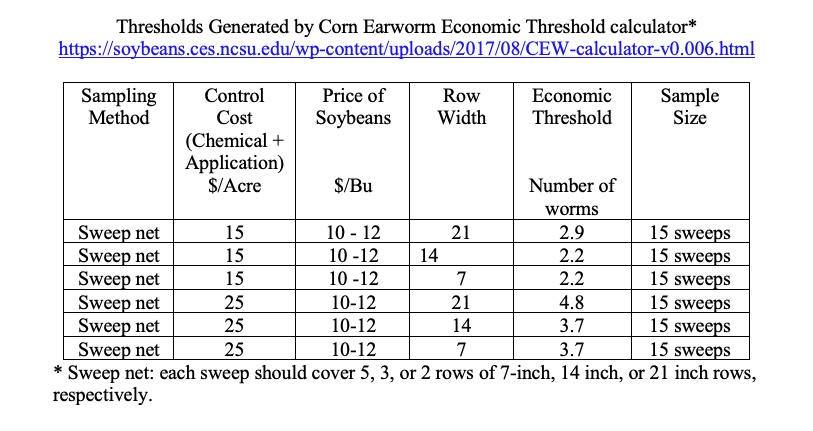Scouting for Soybean Insects and Diseases
go.ncsu.edu/readext?951544
en Español / em Português
El inglés es el idioma de control de esta página. En la medida en que haya algún conflicto entre la traducción al inglés y la traducción, el inglés prevalece.
Al hacer clic en el enlace de traducción se activa un servicio de traducción gratuito para convertir la página al español. Al igual que con cualquier traducción por Internet, la conversión no es sensible al contexto y puede que no traduzca el texto en su significado original. NC State Extension no garantiza la exactitud del texto traducido. Por favor, tenga en cuenta que algunas aplicaciones y/o servicios pueden no funcionar como se espera cuando se traducen.
Português
Inglês é o idioma de controle desta página. Na medida que haja algum conflito entre o texto original em Inglês e a tradução, o Inglês prevalece.
Ao clicar no link de tradução, um serviço gratuito de tradução será ativado para converter a página para o Português. Como em qualquer tradução pela internet, a conversão não é sensivel ao contexto e pode não ocorrer a tradução para o significado orginal. O serviço de Extensão da Carolina do Norte (NC State Extension) não garante a exatidão do texto traduzido. Por favor, observe que algumas funções ou serviços podem não funcionar como esperado após a tradução.
English
English is the controlling language of this page. To the extent there is any conflict between the English text and the translation, English controls.
Clicking on the translation link activates a free translation service to convert the page to Spanish. As with any Internet translation, the conversion is not context-sensitive and may not translate the text to its original meaning. NC State Extension does not guarantee the accuracy of the translated text. Please note that some applications and/or services may not function as expected when translated.
Collapse ▲Corn earworm moth numbers are increasing. To see the 2023 black light trap data online. Among the locations, Pasquotank County has a trap with Crabbe Aviation on Foreman Bundy Road, and we thank them for their cooperation in providing this very useful information.
As for thresholds, there are a couple of things that you need to keep in mind. If you have insect pests that are only foliage feeders such as velvetbean caterpillar, soybean looper, bean leaf beetles, etc. then the threshold is based on percent defoliation for certain stages of plant development. The threshold for foliage feeding insects is 30% defoliation during the vegetative development up to two weeks prior to blooming (R1) and 15% defoliation two weeks prior to blooming until the pods have filled (R7-R8).
For corn earworms, which are foliage and pod feeders, as long as the soybeans are in the vegetative stage, we use the percent defoliation mentioned previously, but once the soybean are flowering or another part of reproduction, then we go with number of worms per sample. If you have a mixture of foliage feeders as well as pod feeders and you are in the reproductive stages of soybean, then use the threshold for corn earworms, which would be the number of worms per sample.
I have included the thresholds for corn earworm and stink bugs below. We have copies of a publication, “Soybean Insect Guide” at our office with the color pictures and information on the important soybean insects for our state. If you would like a copy, please contact us.





